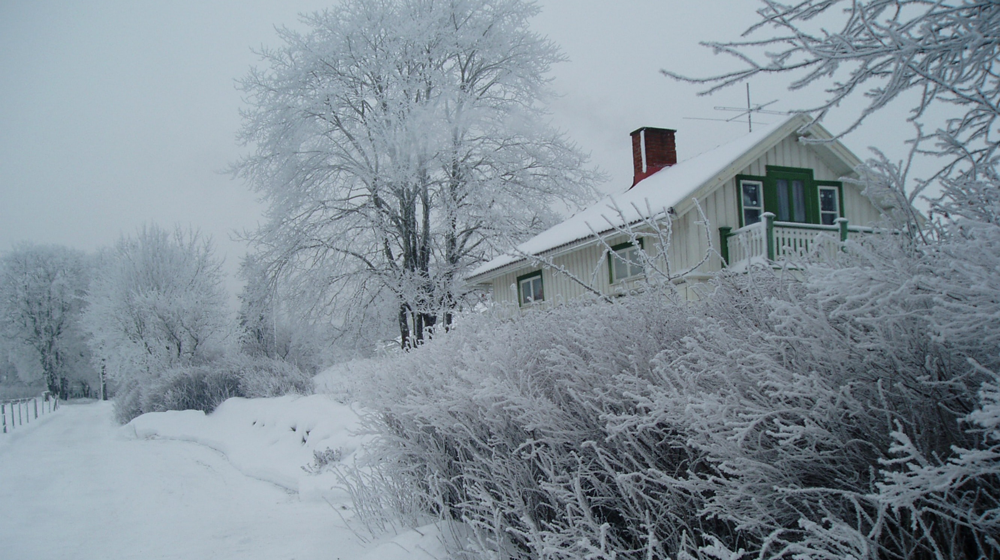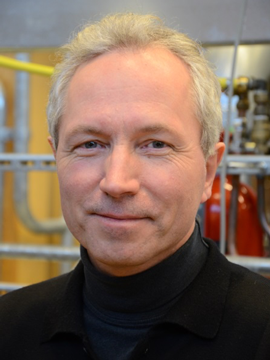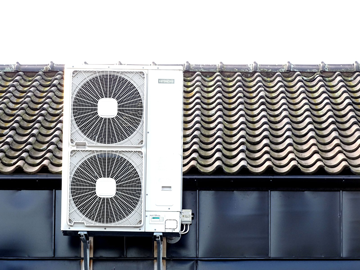EGI writes energy history with the heat pump

The oil crisis of the 70s marked the start of an energy transition where the heat pump would become something of a success story in Sweden. Björn Palm at the Department of Energy Technology (EGI) talks about how KTH has contributed to shaping the energy system as we know it.
Do you have a heat pump to warm your home? You're not alone. More than half of all detached houses in Sweden are equipped with heat pumps. Together, these deliver more heat per capita than in any other country.
Ever since the oil crisis of the 1970s, the government has invested in research on heat pump technology, something that has played an important role in the transformation of the Swedish energy system. This particular energy solution would prove to be a good fit in the country of Sweden, mainly due to our cold climate. In order for an heat pump investment to be profitable, you need a climate with a big demand for heat, that’s when the savings in operating costs can be substantial - as long as the electricity is cheap, that is. And with a lot of hydropower and nuclear power, Sweden has plenty of relatively cheap electricity.

A person who knows everything there is to know about heat pumps is Björn Palm, Professor of energy technology at KTH. Naturally, his house in Huddinge has several heat pump solutions. In addition to two non-functioning heat pumps, he has two slightly more unusual installations underway.
” I am currently installing a geothermal heat pump with propane as refrigerant. It’ll be the first in Sweden of this type. It contains only 150 g of propane, which is considered a safe amount. In addition, a prototype of a geothermal heat pump with ammonia as refrigerant is in the lab at KTH. The idea is to install it at home as well to get some long-term experience".
When not at home, Björn Palm works in the Division of Applied Thermodynamics and Refrigeration (ETT) at KTH. Over the years, he has been involved in a large part of the research in the field, and KTH has been the university that has administered the Swedish research in heat pumps.
From the beginning, his division was called "Refrigeration Technology", and was led by the pioneer in the area, Professor Eric Granryd. But the applications have increasingly come to be about heat pumps - the technology is the same and can often be applied to both cooling systems and heat pumps, Björn explains.
The big advantages of a heat pump for heating are that they require significantly less energy than fuel-based or electric heating.
” But you have to remember that it matters where the electricity comes from: Heat pumps are an excellent solution in Sweden where electricity production comes without carbon dioxide emissions. In Poland, for example, or China, where electricity is largely generated in coal-fired power plants, it is not as obvious that electric heat pumps are a good solution. But we have actually shown in a study that heat pumps can be environmentally beneficial even in parts of China.”

Sweden has long had a major advantage when it comes to heat pumps, not least thanks to government support, and research has lagged far behind in most other countries. According to Björn, KTH is by far the university in Sweden that has the most research in the field. But now interest is growing internationally.
” All studies on the energy systems of the future mention heat pumps as an important part. Now the competition from companies both in Europe and in Asia is intensifying. Companies that benefit from larger domestic markets claim a place in the field.”
When Björn went to university during the second energy crisis in the late 70's, heat pumps were not something that people in general knew about.
” At that time it seemed impossible that you could get four times as much energy as you put in from a machine. Like many students, I was driven by a desire to ’save the world’ and the question how we should solve the energy needs of the future, and economize energy in the best way, came naturally".
Through studies at university, he had good knowledge of basic physics and chemistry, but realized that he lacked knowledge in technology. The best courses were offered by KTH, more specifically by the Division of Refrigeration Technology. And that’s where Björn Palm has remained. Because there is always something to improve.
” In recent years, there has been an increasing focus on how the heat pumps work in the electrical system to even out the load by closing down when the load is at its greatest. Another new issue is how modern electronics and IT affect the heat pumps and how it can be used to optimize operations. IT and AI can compile and analyze data to ensure that the heat pump provides the best comfort at the least possible cost or the least environmental impact".
Björn Palm is not alone in being interested in the area, energy is a hot subject among students. Every year, KTH trains about twenty qualified engineers with a focus on cooling and heat pump technology. Many of these students get jobs in industrial companies and consulting companies where their knowledge is of great importance.
” The entire industry is filled with old students in senior positions! This might be the most important contribution to the development in Sweden in the heat pump area.”
The research results also quickly come in handy. Almost all research projects have industrial companies as partners, which means that the companies have direct access to the results and the opportunity to discuss with KTH what they mean.
” It is satisfying that the research we have done, and the students we have educated, have been able to contribute to a positive development in society”, says Björn Palm contented.
Avdelningen för Tillämpad termodynamik och kylteknik, KTH
Text: Anna Gullers
